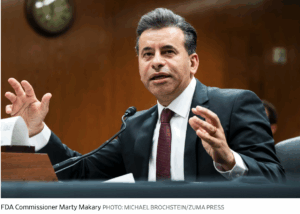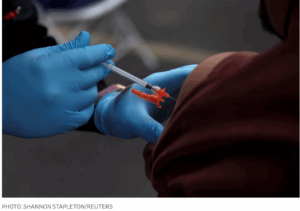
If you’re following the news lately, you know the Trump Administration recently announced an alarming increase in the number of cases of autism and they say Tylenol may be to blame for the increase. Doctors and medical societies say acetaminophen, the active ingredient in Tylenol, remains the best option for treating fever and pain during pregnancy. What’s a pregnant woman to do if she has a high fever or severe pain?
Brianna Abbot and Andrea Petersen, writing for The Wall Street Journal, tell us studies looking at a link between acetaminophen and autism are inconclusive; some show a link between its use during pregnancy and autism risk, while others don’t.
- A 2019 study published in JAMA Psychiatry found that higher concentrations of acetaminophen in umbilical cord blood samples taken at birthwere linked to greater risk of autism and attention-deficit hyperactivity disorder.
- Another in JAMA in 2024 of nearly 2.5 million children in Sweden found no increased risk in children when mothers took acetaminophen during their pregnancy, compared with their siblings who weren’t exposed to the medication in the womb.
Part of the challenge with such studies is wading through the myriad other confounding factors when analyzing the results. Women take Tylenol during pregnancy because they are running a fever or have pain or an infection. Those problems could be the root of a potential autism risk, rather than the medication used to alleviate them, researchers said.
“All of those factors in fact pose a somewhat higher risk to the developing fetus than does the Tylenol itself,” said Helen Tager-Flusberg, director of the Center for Autism Research Excellence at Boston University. “For studies that control for that, we see a far reduced or lowered impact of the Tylenol.”
Tylenol is one of the few medications recommended by doctors for pain or fever during pregnancy. Most other pain relievers including ibuprofen, often sold as Advil, or naproxen aren’t generally recommended because they can harm the fetus.
What is the risk of leaving pain and fever untreated during pregnancy?
Untreated fever, especially in the first trimester, and pain in pregnancy can raise the risk for miscarriage and birth defects, according to the Society for Maternal-Fetal Medicine. “It’s really important to treat the fever,” said Dr. Judette Louis, chair of the Society for Maternal-Fetal Medicine’s Publications Committee. “If they don’t take Tylenol and their fever persists, they might go into preterm labor.”
Preterm birth and other potential consequences of untreated pain and fever are themselves risk factors for autism and other neurodevelopmental disorders. They likely pose a greater risk than the medication itself, doctors said.
Untreated pain can also contribute to maternal depression, anxiety and high blood pressure. The pregnant woman’s overall well-being is important, too, said Dr. Allison Bryant, a high-risk obstetrician at Massachusetts General Hospital. “We certainly don’t want individuals who are pregnant to suffer only because they are pregnant if we think there is a safe alternative,” Bryant said.
What do doctors recommend that pregnant women do?
Pregnant women who have a fever or pain should consult their doctor, advises Bryant. Pain can be an indicator that there is an underlying problem that needs to be addressed, she notes. A temperature over 100.4 degrees is considered a fever.
Both the Society for Maternal-Fetal Medicine and the American College of Obstetricians and Gynecologists continue to recommend acetaminophen use for pain and fever when necessary in pregnancy. Pregnant women should “feel confident using acetaminophen, if it’s otherwise indicated, and after consultation with their providers,” said Bryant, who is also a committee chair of the American College of Obstetricians and Gynecologists. Women should limit its use as much as possible, doctors said, taking it only when needed and then stopping when their fever or pain is resolved.
Since Tylenol has been available on the market since 1960, does Tylenol usage represent the only reason for the rise in autism?
Autism’s causes are complex and not fully understood, but most of it comes down to a person’s genetics, researchers say. The rise in autism rates in the U.S. is largely due to broadening the diagnostic criteria, heightened awareness and increased requirements for documentation needed to access supportive services, they said.
Environmental risks in utero can also contribute, with studies showing links between increased autism risk in children and older parental age, preterm birth, maternal obesity and some infections during pregnancy.
The bottom line for me as a physician: avoid any drugs, especially Tylenol, during pregnancy, unless your doctor feels the benefits outweigh the risks.



